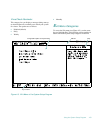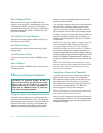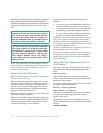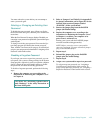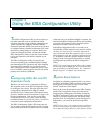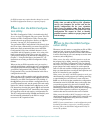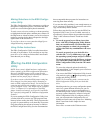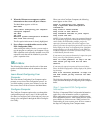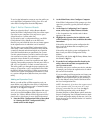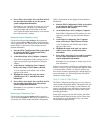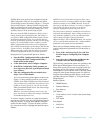
Using the EISA Configuration Utility 5-59
Chapter 5
Using the EISA Configuration Utility
The EISA Configuration Utility is used to tell the sys-
tem what expansion cards are installed and which
expansion slots they occupy. With this information, the
system automatically configures Extended Industry-
Standard Architecture (EISA) cards and can tell you how
to configure Industry-Standard Architecture (ISA) cards
manually by setting jumpers or switches. Before your
system was shipped from Dell, a technician used the
EISA Configuration Utility to enter the correct informa-
tion for the expansion cards initially installed in your
computer.
The EISA Configuration Utility also monitors the
resources required by any installed Peripheral Compo-
nent Interconnect (PCI) expansion card. After installing
or moving a PCI expansion card, you should run the
EISA Configuration Utility to update the system’s data-
base of available system resources stored in nonvolatile
random-access memory (NVRAM).
Configuring EISA, ISA, and PCI
Expansion Cards
Whenever you add, remove, or reposition an EISA or
ISA expansion card, use the EISA Configuration Utility
to reconfigure your system. The utility reads the card’s
corresponding configuration file (.cfg file), which
describes the card’s characteristics and required system
resources, and then uses this information to create a con-
flict-free configuration. (You can also use the EISA
Configuration Utility to set certain system operating
parameters known as system board options, as well as to
correct the system configuration information.)
The EISA Configuration Utility is PCI aware and can
also be used to configure PCI expansion cards. Configu-
ration information for PCI expansion cards is contained
within the card, so no additional .cfg file is required. You
should run the EISA Configuration Utility after installing
or moving a PCI expansion card to keep the system’s
database of available resources accurate.
If the EISA Configuration Utility is not aware of an
installed ISA or EISA expansion card, resource conflicts
can arise. For this reason, it is extremely important to
enter information about ISA expansion cards, as well as
EISA expansion cards, into the EISA Configuration Util-
ity. In addition, certain ISA graphics adapter cards and
multiport serial cards require some memory or caching
reconfiguration provided by the EISA Configuration
Utility.
NOTE: The System Setup program allows you to change
the interrupt requests (IRQs) for the serial and parallel
ports to maximize system performance. See “Advanced
Menu Categories” in Chapter 4 for instructions.
System Board Options
In addition to configuring expansion cards, you can use
the EISA Configuration Utility to change certain system
board options, as described in “Step 3: View or Edit
Details” found later in this chapter.
Many of the system board options in the EISA Configu-
ration Utility correspond to categories in the System
Setup program. Although the two utilities are separate,
the EISA Configuration Utility automatically forwards
changes to, and reads changes from, the System Setup
program. Thus, for configuration options that appear in
both utilities, you can set the options through either
utility.
NOTE: In most cases, your system operates according to
the most recent changes, regardless of which utility you
use to make the changes. However, some software written



